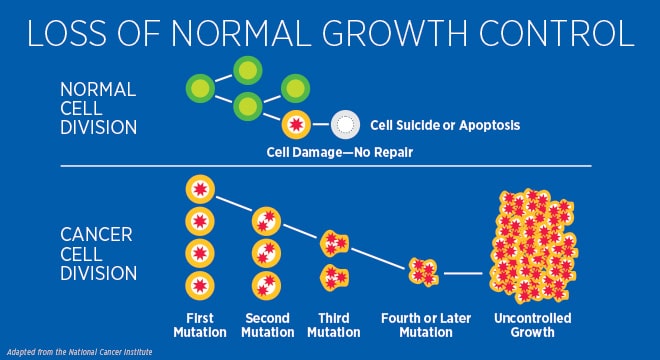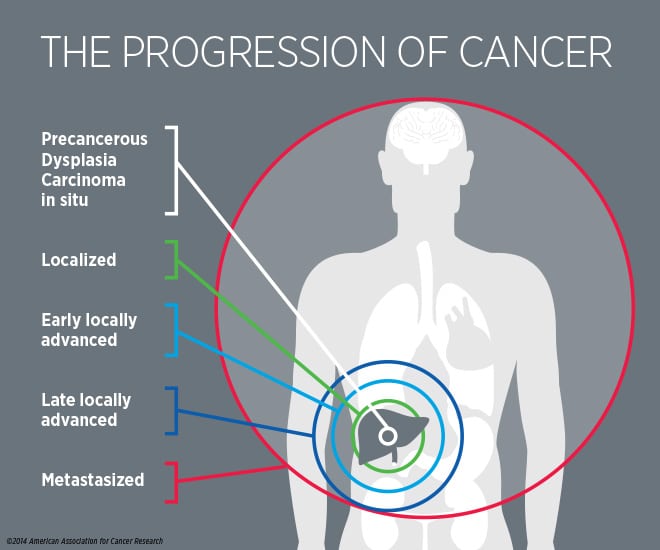What is cancer?
American Association for Cancer Research

Cancer isn’t a single disease. The term cancer encompasses more than 200 diseases all characterized by the uncontrolled proliferation of cells. Ignoring the body’s signal to stop, malignant cells multiply to form tumors in organs and tissues or, in the case of blood cancers, crowd out normal cells in the blood stream and bone marrow.

In a healthy body, cells grow and divide in a controlled, orderly fashion to replace those that have grown old or have been damaged and die by design in a process called apoptosis. Cancer occurs when these natural processes go awry.
When the genetic material of a cell – the DNA – is damaged, mutations can arise, potentially disrupting normal growth and division. An accumulation of mutations can turn normal cells into precancerous cells, which sometimes multiply and evolve into cancer cells. Cancer is a result of the accumulation of these cells.

Cancer is not an event, but a process that takes time, often years, to develop. The length of time varies widely and depends on the identity, order, and speed at which mutations accumulate.
The stage of cancer describes the progression of the disease in the body from precancer to cancer that has spread to distant organs or tissue – metastatic cancer.
Cancers are classified based on the organ or type of cell in which they originate:
- Carcinomas are cancers that occur on the skin or tissues that line internal organs.
- Sarcomas are cancers that occur in the bone, cartilage, fat, muscle, blood vessels, or other connective or supportive tissue.
- Leukemias are cancers that occur in the cells of the blood and bone marrow.
- Lymphomas are cancers that occur in the cells of the immune system and typically appear within the lymphatic system.
- Central nervous system cancers are cancers that occur in the cells of the brain and spinal cord.